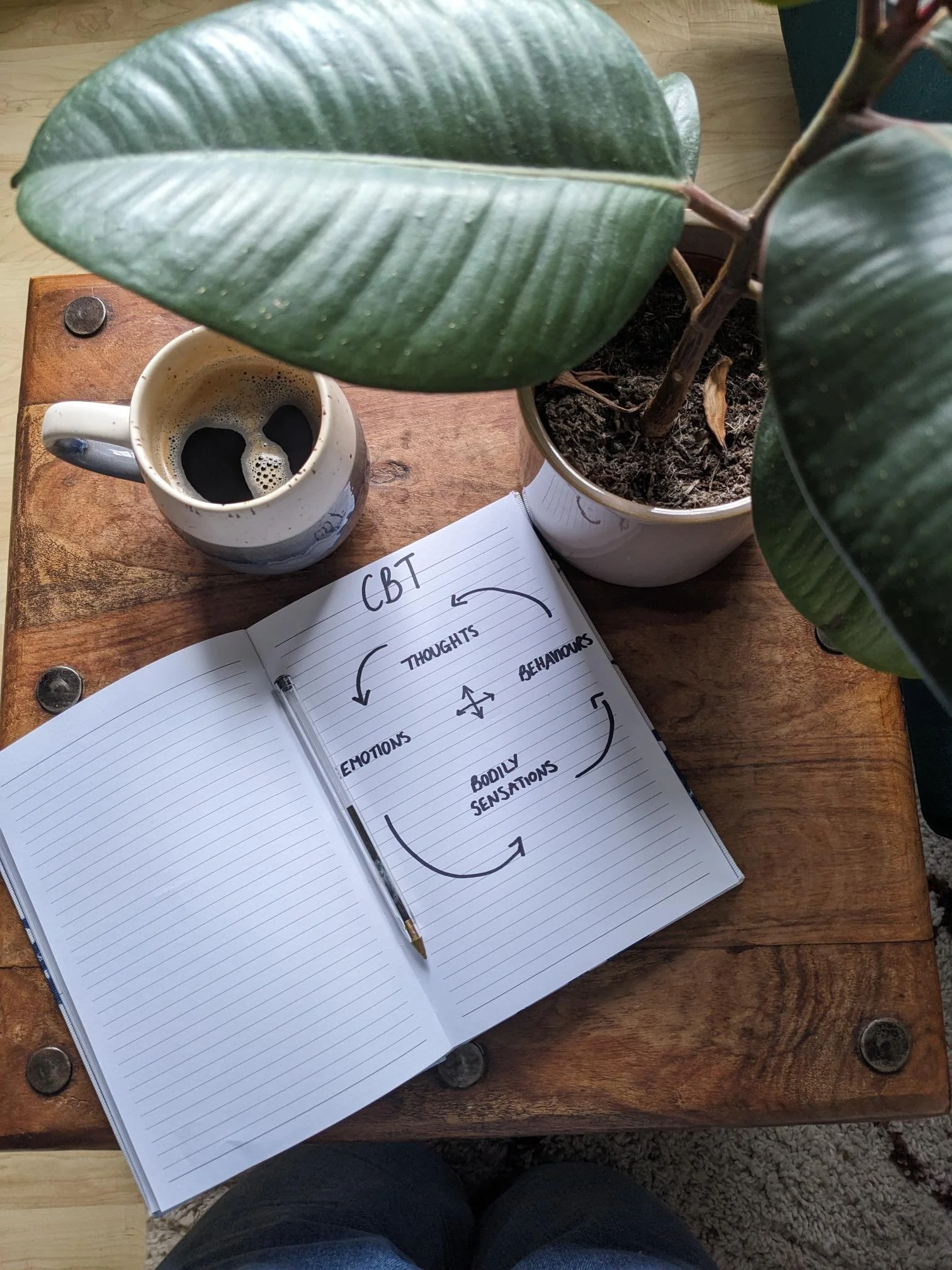What Is Therapy?
Therapy means different things to different people, and there are many common misconceptions about what it involves. At its core, therapy is a space to explore thoughts, feelings, and behaviours in a safe, non-judgmental environment—with the aim of making meaningful changes.
The word "therapy" is often used as an umbrella term to describe a wide range of approaches, such as counselling, Cognitive Behavioural Therapy (CBT), and EMDR (Eye Movement Desensitisation and Reprocessing). I primarily work within the CBT framework, but my approach is integrative—I draw on a range of evidence-based methods to tailor support to your needs.
One of the biggest myths about therapy is that you have to be in crisis or “seriously unwell” to benefit. In reality, therapy can be helpful for anyone who wants to better understand themselves, improve how they feel, or navigate a challenging period in life.
What Is CBT?
CBT, or Cognitive Behavioural Therapy, is an evidence-based approach recommended by NICE (National Institute for Health and Care Excellence) for treating common mental health problems such as anxiety, depression, and stress.
It focuses on the “here and now,” helping you understand how your thoughts, feelings, and behaviours interact—and how these patterns might be keeping you stuck. CBT is a practical, structured approach that involves learning and applying tools both in and outside of sessions.
It’s also a collaborative process: we’ll work together to understand what’s going on and figure out strategies that work for you. Like many things, CBT works best when it’s practiced consistently, so there will be some between-session exercises to help reinforce your progress.
What is EMDR?
EMDR (Eye Movement Desensitization and Reprocessing) is an evidence-based therapeutic approach designed to help individuals process and heal from traumatic experiences, distressing memories, or unhelpful beliefs. It is particularly effective for those dealing with PTSD, trauma, and anxiety but can be used for many other problems too.
EMDR uses a structured process that involves recalling distressing memories while engaging in bilateral stimulation (often through guided eye movements). This process helps rewire the brain’s response to trauma, reducing the emotional charge of difficult memories and allowing the person to integrate these experiences in a healthier way.
While I primarily use CBT, I incorporate EMDR when it’s appropriate for a client’s needs. EMDR is a powerful tool for those who find themselves "stuck" in certain memories or experiences that continue to affect their daily life.
What to Expect
In our initial sessions, we’ll focus on understanding what’s bringing you to therapy, how the issue is being maintained, and what your goals are. We’ll then create a treatment plan and begin exploring tools and strategies tailored to your needs.
Before starting therapy, we’ll schedule a 30-minute consultation. This is a chance for us to talk through what you'd like support with, go over some basic lifestyle and safety questions, and see if CBT (or therapy more broadly) is the right fit for you.
If we decide to move forward, we can book a block of sessions together at a pace that suits you. When the time comes to end therapy, we’ll develop a relapse prevention plan to help you maintain the gains you've made and feel confident moving forward.
Currently, all sessions are completed virtually over video calls.
